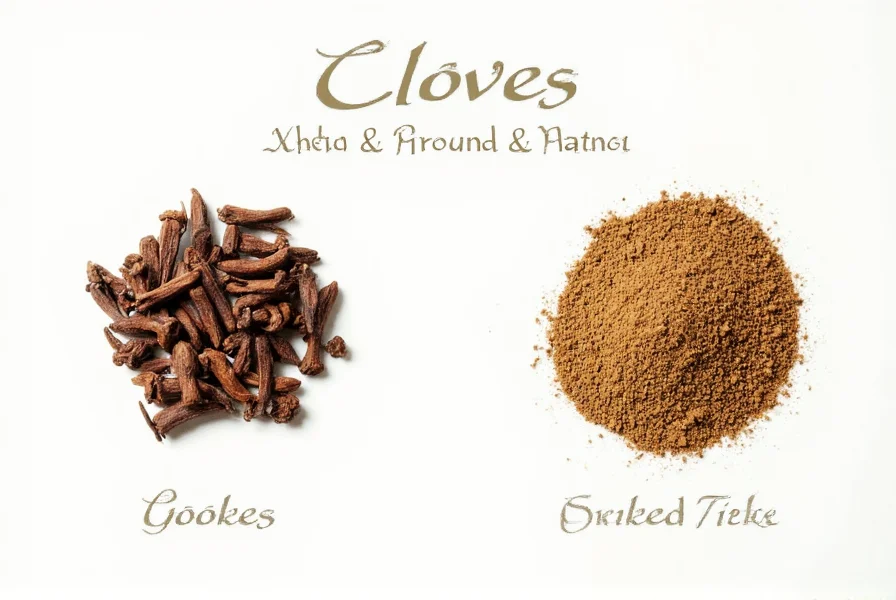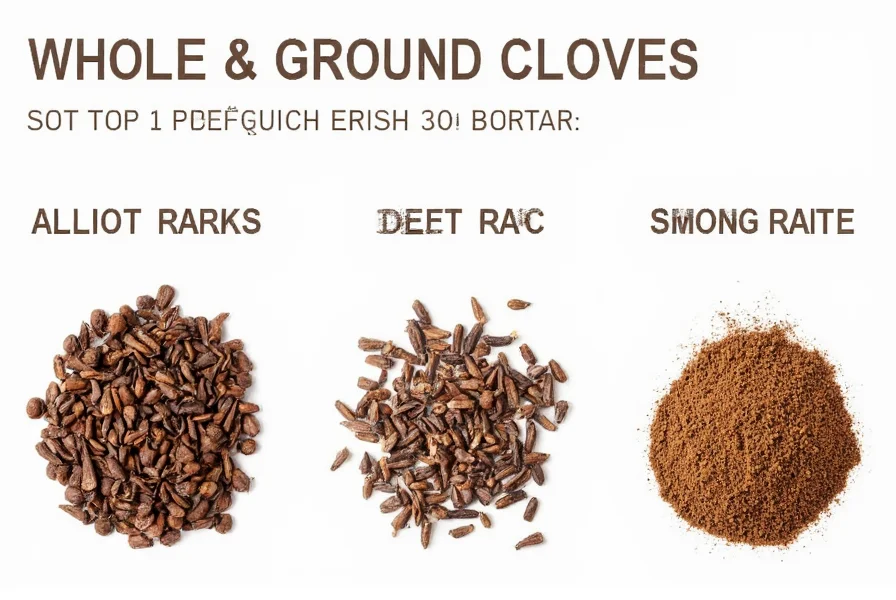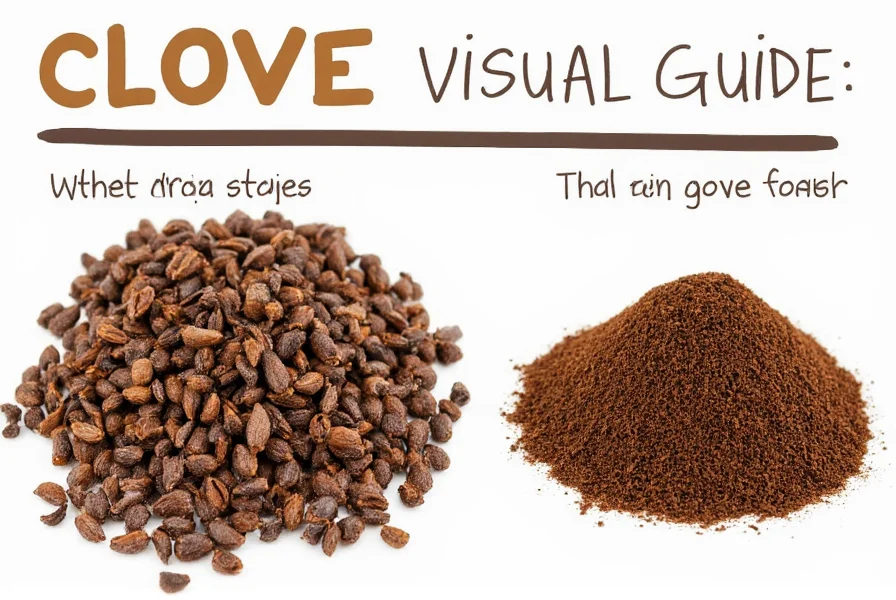Cloves represent one of the world's oldest and most recognizable spices, valued for both culinary and medicinal applications for centuries. Understanding their visual characteristics helps ensure proper identification and usage in cooking, baking, and traditional remedies.
Visual Characteristics of Cloves
When examining a picture of cloves spice, several distinctive features become apparent. Whole cloves resemble tiny nails or pins, which explains their name derived from the Latin clavus meaning "nail." The dried flower buds consist of a rounded flower head (the "nail head") attached to a long, thin calyx tube (the "stem").

Whole Cloves vs. Ground Cloves
Understanding the difference between whole and ground forms is essential for proper culinary application:
| Characteristic | Whole Cloves | Ground Cloves |
|---|---|---|
| Appearance | Nail-shaped buds, 1-2 cm long, reddish-brown | Fine powder, uniform reddish-brown color |
| Aroma | Strong, sweet-spicy fragrance when crushed | Intense, warm aroma immediately noticeable |
| Shelf Life | 2-3 years when properly stored | 6-12 months before flavor diminishes |
| Culinary Use | Infusions, stews, pickling, whole spice blends | Baking, spice mixes, rubs, sauces |
Botanical Origin and Harvesting Process
Cloves develop as flower buds on evergreen trees native to the Maluku Islands in Indonesia. The unopened flower buds are harvested when they turn from green to pink, then sun-dried until they become the familiar reddish-brown color. This drying process concentrates their essential oils, particularly eugenol, which constitutes 70-90% of clove oil and provides their characteristic aroma and flavor.

How to Identify Quality Cloves
When selecting cloves, whether viewing a picture of cloves spice or purchasing them:
- Color: High-quality whole cloves display a consistent reddish-brown hue. Avoid cloves with black spots or uneven coloring.
- Oil Content: Premium cloves contain visible essential oils. When pressed, they should leave an oily residue on paper.
- Weight: Good quality cloves feel heavy for their size, indicating higher oil content.
- Aroma: Fresh cloves emit a strong, sweet-spicy fragrance when crushed between fingers.
Culinary Applications and Flavor Profile
Cloves deliver a complex flavor profile described as warm, sweet, pungent, and slightly bitter with numbing properties. Their intense flavor means they're typically used sparingly. Common applications include:
- Pickling solutions and brines
- Spice blends like garam masala, Chinese five-spice, and pumpkin spice
- Ham and pork glazes
- mulled wines and spiced ciders
- Baked goods including gingerbread and fruit cakes
Storage Recommendations
To maintain freshness and potency:
- Store whole cloves in airtight containers away from light and heat
- Keep ground cloves in the refrigerator for extended shelf life
- Avoid storing cloves near strong-smelling foods as they readily absorb odors
- Check for freshness by crushing a clove and verifying strong aroma
Common Substitutes and Complementary Spices
When cloves aren't available, allspice provides the closest flavor profile, though slightly milder. Cinnamon and nutmeg can work in some applications but lack cloves' distinctive pungency. Cloves pair exceptionally well with:
- Cinnamon
- Nutmeg
- Ginger
- Cardamom
- Star anise
Frequently Asked Questions
What does a clove of spice look like compared to other spices?
Whole cloves have a distinctive nail-like shape with a bulbous head and slender stem, measuring 1-2 cm long. They're reddish-brown in color and easily distinguishable from allspice (berry-shaped) or star anise (star-shaped). Ground cloves form a fine reddish-brown powder with a stronger aroma than many other ground spices.
How can I tell if my cloves are still fresh?
Fresh cloves should have a strong, sweet-spicy aroma when crushed. Whole cloves that feel light or crumble easily have lost their essential oils. When pierced with a fingernail, fresh cloves should release aromatic oil. Ground cloves that have lost potency will have a dull brown color and weak fragrance.
Why are cloves called "clove"?
The name "clove" comes from the Latin word "clavus," meaning "nail," which describes the spice's nail-like shape. This visual characteristic makes cloves one of the most easily identifiable whole spices, especially when viewing a detailed picture of cloves spice.
Can I substitute ground cloves for whole cloves in recipes?
Yes, but with caution. The general conversion is 1 whole clove equals 1/4 teaspoon ground cloves. However, whole cloves release flavor more gradually during cooking, while ground cloves disperse flavor immediately. For dishes with long cooking times, whole cloves are preferable as they can be removed before serving.











 浙公网安备
33010002000092号
浙公网安备
33010002000092号 浙B2-20120091-4
浙B2-20120091-4